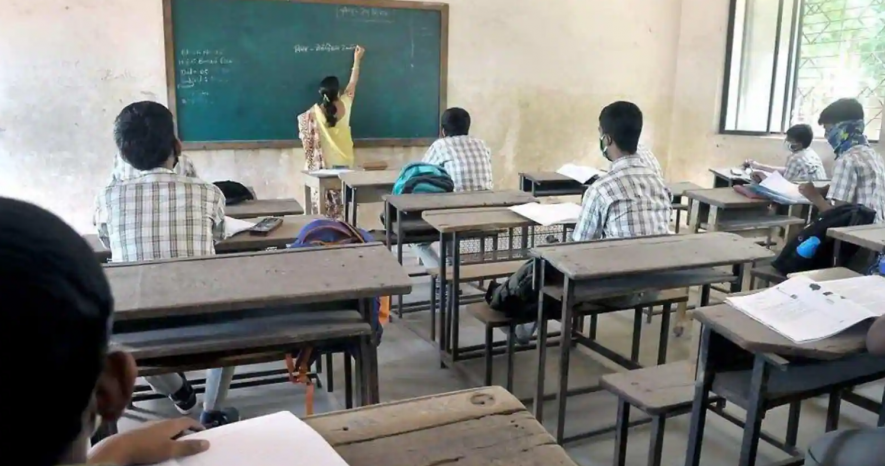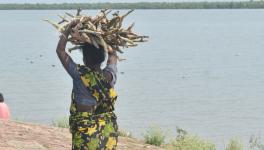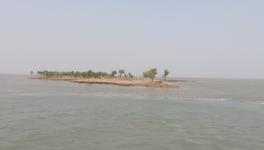West Bengal: School Education Suffers With Declining Enrolment and Closure of Schools

Image for representational purpose. Credit: Mint
Kolkata: The state government of West Bengal is now adamant about closing down more than 8,000 government-aided schools in the state out of which 6,845 are primary schools and 1,362 are higher primary schools. Out of these schools, 531 are in Kolkata.
Recently, the state government has listed schools with less than 30 students. On average, these schools have 17-20 students enrolled, while the total number of full-time teachers associated with these schools adds up to 19,083 and the number of ad hoc teachers is 1,181. If the government goes ahead with its plan to close the schools – supposing 25 students are enrolled in each school on average – about two lakh students will bear the brunt of this decision.
Out of the 8,207 schools on the list, most (1,100) are in Nadia district, followed by Kolkata (531). The numbers for the other districts are: North 24 Parganas (538), Bankura (886), Birbhum (320), Darjeeling (418), Hooghly (303), Howrah (273), Jalpaiguri (216), Jhargram (478), Kalimpong (312), Malda (146), and Murshidabad (326). The teaching and non-teaching staff will be transferred to nearby schools once these schools are shut. As a result, a lower intake through the teachers’ eligibility test can be expected this year in the state.
The number of students from these schools has reportedly gone down after the pandemic-induced lockdown. Reports say that while many boys may have migrated in search of work, girls may have been married off in large numbers. The secondary school examination this year was taken by four lakh fewer students than the last year – which points towards a grim picture of education in the state.
Declining Enrolment
According to a 2018 report published in the Journal of Emerging Technologies and Innovative Research, the author, Moumita Dey, wrote that in the South 24 Parganas, there were a total of 6,71,255 students studying in classes V to VIII in 2011, out of which 90.4% were enrolled in government schools. By 2015, this share had been reduced to 80.56%. The total number of students studying in classes V to VIII also went down to 5,05,792 during this time. This is alarming and perhaps shows that the situation has been worse since even before the pandemic in the state.
Experts believe that corruption in government jobs and teaching jobs may have impacted the education sector in the state. According to the Right to Education Act, the teacher-to-student ratio ought to be 1:30 for primary schools and 1:35 for secondary schools. However, according to reports, the state has a ratio of 1:73 for primary schools and 1:72 in secondary schools.
At the Tiorpara Radharani Jr High School in Birbhum’s Murarai, the total number of students enrolled for classes V to X is only 342. The school has only ad hoc teachers and no permanent teachers. In Jalpaiguri Kranti Jr Balika Vidyalaya, there is only one teacher to teach all the classes and ensure the 350 students get their midday meals. A UNESCO report from 2021 had shone a light on this situation and had said that the state has more than one lakh vacant teaching posts.
Scams in the Appointment of Teachers
The School Selection Commission (SSC) scam in West Bengal came under the spotlight after the Enforcement Directorate (ED) unearthed Rs 21 crore 90 lakh in hard cash from Arpita Mukherjee’s residence. Arpita Mukherjee is believed to be a close confidant of TMC’s Partha Chatterjee, who is the former state education minister. Both have been arrested and the matter is being investigated by ED as well as the Central Bureau of Investigation (CBI).
After the formation of the Trinamool Congress (TMC) government in the state in 2011, a serious breach in protocol was noticed in the Regional Level Selection Test (RLST) of 2012 – a teacher recruitment process – when ranks, according to the combined merit panel, were jumped and lower ranked candidates were recruited as teachers. Many candidates who were at the receiving end of the selection board's “irregularity” knocked on the doors of the court. As of now, related litigations are still pending in the Supreme Court.
In the State Level Selection Test (SLST) of 2016 – which recruits teachers for classes IX, X, XI, and XII – similar irregularities were noticed after Minister Paresh Adikary’s daughter, Ankita Adhikary, managed to get appointed as a government teacher in Cooch Behar. She was later convicted by a court and her job was terminated. She was also told to return the entire salary that she received in the 41 months that she was on job.
In the upper primary section, during the start of the recruitment process, many cases were filed alleging that non-trained candidates got a preference for jobs and many out-of-turn candidates were given appointments. On December 11, 2019, the Calcutta High Court, in view of the malpractices, ordered the cancellation of the merit list and a halt to the recruitment process.
However, after the recruitment process restarted in 2016, things did not change as various lowly placed candidates were placed on the merit list and were recruited anyway.
The non-teaching staff recruitment panel started the process of filling up forms from August 10 to 31, 2016. On May 4, 2019, the SSC intimated to the candidates that the recruitment process was over. Interestingly, after this announcement was made, hundreds of off-panel candidates were hired. At first 25, then 542 people’s salaries were terminated by the Calcutta HC after it found large-scale irregularities in the recruitment process.
The last SSC teachers’ recruitment – SLST for classes IX and X – was held on November 27, 2016, and the SLST for classes XI and XII, was held on December 4, 2016. The Upper Primary Teacher Eligibility Test (TET) exam was last held on August 16, 2015. However, since then, the teacher recruitment process for upper primary schools has been stopped in the state.
It was alleged that during the entire recruitment process, a section of the would-be teachers used to pay hefty sums to the TMC leadership, which used to be channelised to Partha Chatterjee, the then education minister.
Prior to 2011, during the Left Front regime, the recruitment process was a decentralised one with five regional authorities giving recruitment approval. However, later under TMC rule, a Bill was introduced in the Assembly whereby the decentralised process was written off, and the West Bengal Board of Secondary Education, with Prof Kalyanmoy Ganguly as its head, allegedly went into “unofficial understanding” with the education minister.
The Calcutta High Court constituted a Committee that got wide evidence of irregularities and ordered the removal of both Ganguly and Manik Bhattacharya from the post of the Chairman of the West Bengal Board of Secondary Education and the West Bengal Primary Teaching Council, respectively.
It is alleged that during the pandemic-induced lockdown, when everything came to a standstill, several candidates gave ‘cut money’, which was channelised to then education minister Partha Chatterjee, and they were recruited illegally.
After the change in the recruitment process in 2014, the first merit list published by the SSC invited allegations of widespread irregularities due to which the merit list of the upper primary level was cancelled by the High Court. In the second list, too, there were irregularities due to which not a single appointment has been made since 2014. These irregularities were noticed by the High Court following which it constituted a committee.
In many cases, the academic scores of the undeserving candidates allegedly in lieu of money were hiked by the SSC authority. At the same time, many deserving candidates, who got more than the cut-off marks, were rejected ostensibly because the online submission of their documents was rejected.
In 1998, to get some clarity on the teachers' recruitment process, the then Left Front government had constituted the SSC, which was divided into five regions. Each region was empowered to recruit teachers according to vacancies published earlier. In the same manner, the state government gave power to the district primary teaching council to appoint teachers.
After TMC came to power in the state, the primary teachers' recruitment process was marred by “nepotism” and Chatterjee, after becoming education minister in 2013, took this opportunity to centralise the whole process. A Bill was passed in the Assembly that effectively centralised power. It wrested power with the Primary Teaching Council for the recruitment of primary teachers and the power to recruit upper primary teachers was given to the West Bengal Board of Secondary Education, at whose helm was the minister himself.
Closures of Schools
According to a report published by the state education department, in the past 10 years, about 7,018 primary schools have been closed down in the state. Most of the schools which have been closed are located in economically distressed areas. The largest number (1,192) of schools closed were in the South 24 Parganas district, then in West Medinipore (1.047), and East Medinipore (867). This corresponds with the decline (of over six lakh) in enrolment as well – from 78,04,684 students in 2012 to 71,95,728 in 2022. Out of the 980 primary junior schools in the state, 64 have been closed down and 145 teachers have been transferred to other schools.
According to the data compiled by the education department, the number of primary junior and high schools fell from 97,428 in 2019 to 95,755 in 2020 The number in 2022 had further dropped to 94,744.
Among the vacant teaching posts in the state, a sizeable number of vacancies pertain to mathematics teachers (3,132) and physics teachers (1,795).
NewsClick spoke with Dhrubosekhar Mondal, general secretary of the All Bengal Primary Teachers’ Association. He said, “This has not happened suddenly. The total disregard for the school education system could be seen in all the policies formulated by the state government. In addition, the socioeconomic status of the people from the state has deteriorated in the last decade or so – which had led to a high number of dropouts. The government schemes remain on the paper; there is not much effect on the school education system.”
Bikash Dey, a school teacher at the Gorekhara Higher Secondary School, Sonarpur, spoke against the new transfer policy, which is “leading to shortages of teachers” in rural areas. “Earlier, the government-aided schools were allowed to have separate management, but that category of schools was forcefully abolished and the ruling party representatives have become the government nominees. They have no idea about the school education system,” he alleged.
Get the latest reports & analysis with people's perspective on Protests, movements & deep analytical videos, discussions of the current affairs in your Telegram app. Subscribe to NewsClick's Telegram channel & get Real-Time updates on stories, as they get published on our website.
























